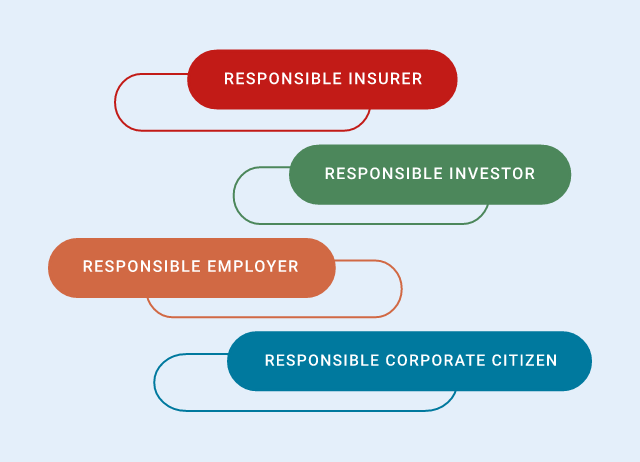23 May 2024
Working with Artificial Intelligence
From forecasts of growth potential that promise 16% higher GDP than today, to risks and fears for employment. The future of work with AI, including in the insurance industry
For several years now, Artificial intelligence (AI) has been changing the way we work at both an organizational and economic level. According to Goldman Sachs, 300 million jobs at a global level will be exposed to the automation generated by AI; however, the integration between 'algorithms' and humans will be greater than replacement.
Among the areas that are most affected by the use of AI are medical diagnosis, autonomous driving, image recognition and machine translation, as well as data analysis and finance, marketing, and logistics. What is not yet clear, however, is the scope and impact this technological revolution could have - and to a large extent is already having - on people's lives.
Artificial Intelligence: fears and opportunities
On the one hand, in fact, AI makes it possible to automate many repetitive and low-value-added tasks, so that people can focus on more creative and higher-value-added activities; on the other hand, however, the risk of job losses has been highlighted.
But there is more to that: as Lidia Baratta points out in her article “Modern Times” for the 2023 edition of the Bollettino Generali, these technologies are geared more to automating the work of the qualified and creative than the more repetitive tasks of less qualified workers. Some of the work of publishing companies and law firms, for example, could be automated.
A future full of expectations for companies
That of AI is thus an increasingly central topic in the public debate, and companies are also questioning the potential of this technology, as well as the impacts it can generate.
High growth potential: McKinsey's estimates
According to McKinsey, artificial intelligence has the potential to generate an additional $13 trillion of global economic activity by 2030, corresponding to about 16% higher cumulative GDP than today. This will come mainly from the replacement of labor by automation and increased innovation in products and services.
According to the same report, by 2030 about 70% of companies will have embraced the artificial intelligence revolution and adopted at least one type of AI technology, but less than half will have fully absorbed the four sub-categories of the industry:
- Machine Learning,
- Deep Learning,
- Natural Language Processing, and
- Computer Vision.
Forecasts in the insurance industry: Moody's analysis
According to Moody's research on a sample of more than 500 companies in the Risk & Compliance area, 14% of insurance companies have already adopted or are testing AI solutions. The most significant finding, however, is the percentage of companies in the industry that are considering introducing artificial intelligence into their processes: 55%, a number that equates to more than one in two companies.
The industry's confidence in artificial intelligence is confirmed by expectations regarding the impact its introduction could have on companies: 85% expect at least a moderate impact, 36% a significant change, and 17% even a transformative impact.
The European regulatory landscape
European regulators have also begun working to establish standards and control parameters for the responsible use of AI, with significant implications for the insurance industry as well.
The European Artificial Intelligence Regulation (AI Act), proposed by the European Commission in April 2021 and approved on 13 March 2024, includes new obligations to:
- assess risks arising from the use of AI;
- control and supervise algorithms;
- ensure transparency to customers.
The goal is to promote the responsible development of AI strengthening, on the one hand, Europe's competitive potential globally and, on the other hand, maximizing resources and coordinating investments.
Generali's approach
On April 30th, Eiopa published an update on the use of AI by European insurance companies: already today, half of the companies use this technology in the non-life business, and within three years, it will be 8 out of 10.
With the approval of the AI Act, it will be a priority for companies to increase transparency regarding the functioning of these models. Generali, for example, has already developed guidelines based on the S.A.F.E. methodology that allow to control the security, accuracy, fairness, and explainability of its algorithms.
AI initiatives and applications
The Group has also equipped itself - the first in Europe and ahead of the AI Act - with:
- an internal regulation to govern the use of AI,
- guidelines for the ethical development of algorithms,
- a robust framework for managing AI-related risks in all areas of application, from pricing to underwriting and claims.
This includes, for example, the Trustworthy AI initiative, which aims to ensure the responsible use of data and algorithms to earn full digital trust from customers.
Generali has also invested in training its employees to provide them with the necessary skills depending on their use and development of such technologies; these training initiatives also cover the ethical risks associated with AI.
Over the past 18 months, the Group has identified several AI-based components that can be adopted in 4 areas:
- SME and Life/Protection underwriting: automatic document management and processing to accelerate underwriting, risk assessment, and management of insured activities / assets;
- Claims management: automatic extraction of information, initial damage assessment, claims settlement, fraud prevention, and image processing;
- Operations automation, supporting operational activities by examining and classifying documents, extracting data and uploading them into IT systems;
- Pricing, from price optimization to advanced risk modeling, with a focus on climate risk.
To date, thanks to AI-based automation, over 10 million documents have been automatically managed, more than 1 million claims have been automatically settled, and over 5 million interactions with customers have occurred through virtual assistants or AI such as voicebots and chatbots.



